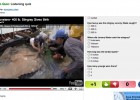Cargando...
Recursos educativos
-
Nivel educativo
-
Competencias
-
Tipología
-
Idioma
-
Tipo de medio
-
Tipo de actividad
-
Destinatarios
-
Tipo de audiencia
-
Creador
Lo más buscado
- Juegos de dictado de palabras
- Juegos de tangram de figuras
- Palabras agudas, llanas y esdrújulas
- Carga eléctrica
- Palabras acabadas en z
- Capitales de América
- Salvador Dali
- imágenes matemáticas
- Paraules amb x
- Poemas infantiles
- Arte gótico
- Cine y educación
- juegos educativos
- Repaso del adjetivo
- Instrumentos musicales
-

Unit 5: Interaction, adaptation and coordination in animals and plants
EduBook Organización
- 3474 visitas
Acquired (adj): referring to behaviour: not present at birth, which an animal has to learn. auxin (n): a hormone which affects the growth and development of plants. behaviour (n): the way an organism…
-

Final self-evaluation 12.04 - The Population of Spain
EduBook Organización
- 3376 visitas
Match the sentence with the correct ending: The least densely populated areas are in the interior of the Peninsula... Until the beginning of the 20th century, the birth rate was high... The largest…
-

Analyse. Senior and youth populations
EduBook Organización
- 3125 visitas
Look at the table and do the activities: Compare the youth population in Spain and Uganda. Why are they so different? What can a difference in the percentage of the population over 65 indicate in terms…
-

Innate or acquired behaviour?
EduBook Organización
- 2874 visitas
There are two types of behaviours: innate and acquired. Animals have innate behaviours from birth. They do not have to learn them. Innate behaviours are automatic and cannot be changed, like coughing,…
-

Match. Groups of vertebrates
EduBook Organización
- 2783 visitas
Match each group of vertebrates with its main characteristic: Their body is covered in feathers. ➝ Their body is covered in fur and they give birth to live young. ➝ They spend part of their lives in…
-

Learn. Interpreting data
EduBook Organización
- 2551 visitas
The object of this exercise is to find out which factors are used to calculate the Human Development Index (HDI). By analysing the statistics, you can find out about the relationships between them and…
-

Video: River Monsters, Stingray
Esl video Organización
- 3478 visitas
This 2 minute video from Animal Planet TV features a 400 lb. Stingray giving birth to 3 youngs. Students may discuss what kind of "monsters" you can find in a river. There is a comprehension…
-

Final self-evaluation 07 - Animal reproduction
EduBook Organización
- 2415 visitas
Decide if the following statements are true or false: The length of gestation is the same for every species. ➝ The shells of eggs allow them to dry. ➝ Birds look after their young after birth. ➝…
-

Describe. The Spanish population in 2009
EduBook Organización
- 2293 visitas
Look at the table and do the activities: Use the information in the table to calculate the birth rate, mortality rate and infant mortality rate. What is the total fertility rate? What is the natural…
-

The evolution of Spanish society
EduBook Organización
- 2275 visitas
6.1. Demographic changes In recent decades, Spain has experienced a significant drop in its birth rate (10.5 % in 2010), and Spaniards are tending to have children later in life. At the same time, life…
Te estamos redirigiendo a la ficha del libro...













